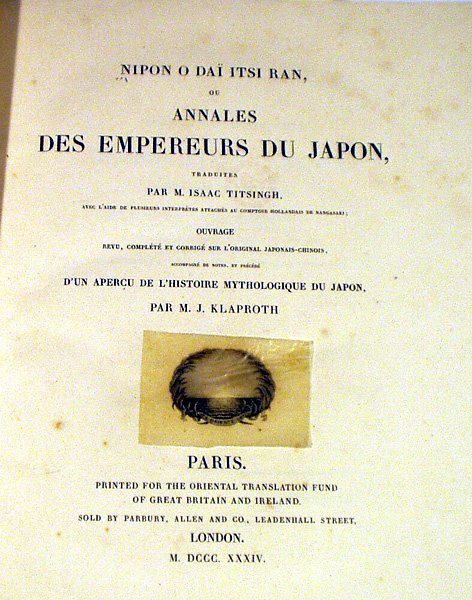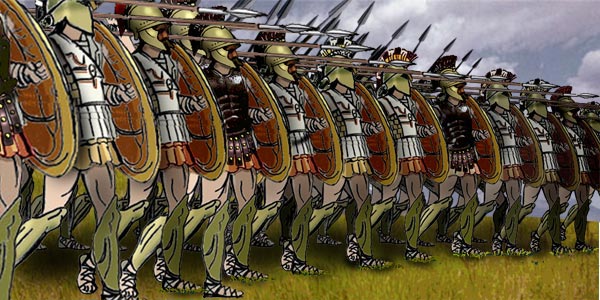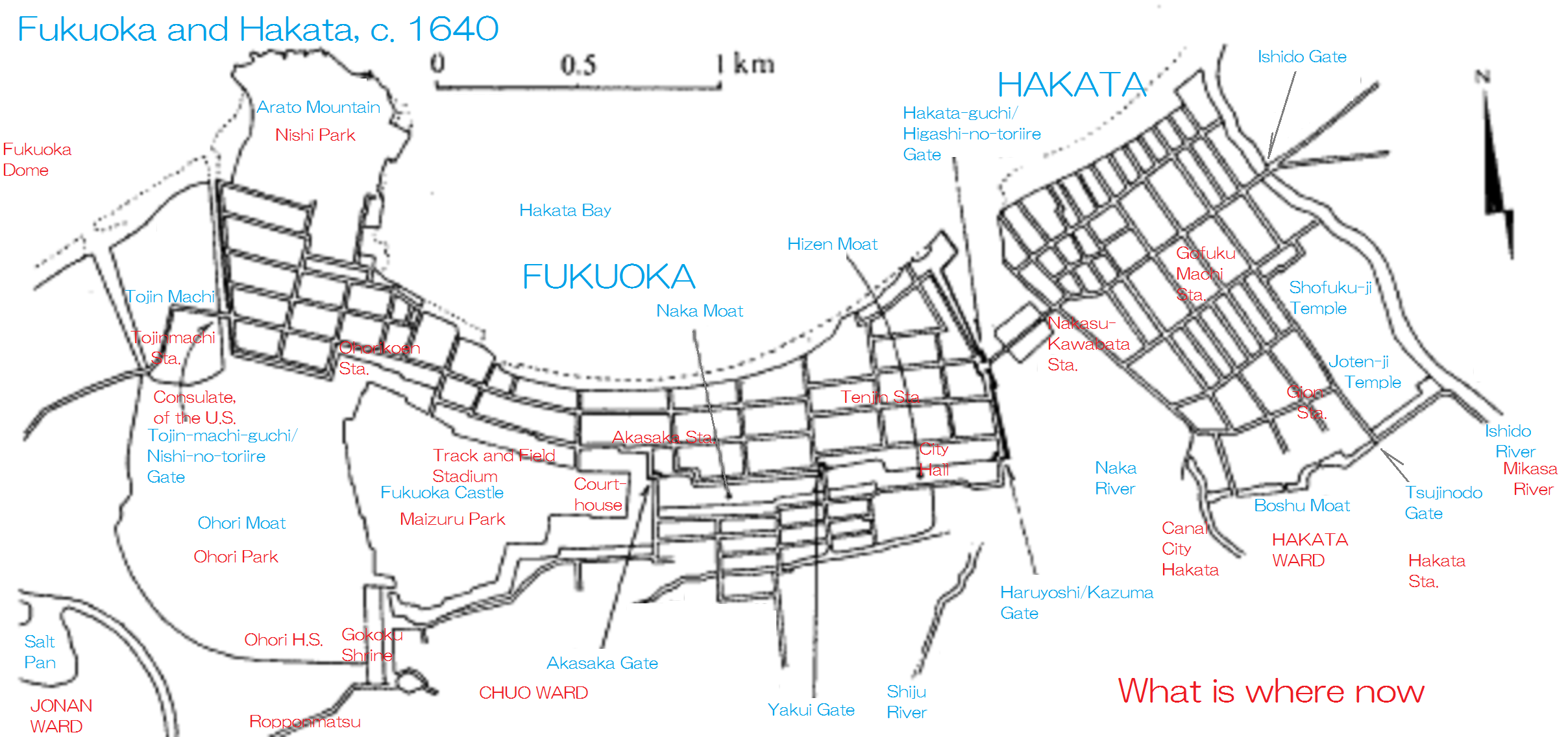|
Battle Of Bun'ei
The , or Bun'ei Campaign, also known as the First Battle of Hakata Bay, was the first attempt by the Mongols, Mongol-led Yuan dynasty of China to Mongol invasions of Japan, invade Japan. After conquering the Japanese settlements on Tsushima Island, Tsushima and Iki Island, Iki islands, Kublai Khan's fleet moved on to Japan proper and landed at Hakata Bay, a short distance from Kyūshū's administrative capital of Dazaifu, Fukuoka, Dazaifu. Despite the superior weapons and tactics of the Yuan forces, those that disembarked at Hakata Bay were grossly outnumbered by the samurai force; the Japanese had been preparing, mobilizing warriors and reinforcing defenses since they heard of the defeats at Tsushima and Iki. The Japanese defenders were aided by major storms which sunk a sizable portion of the Yuan fleets. Ultimately, the invasion attempt was decisively repulsed shortly after the initial landings. The Yuan troops withdrew and took refuge on their ships after only one day of fig ... [...More Info...] [...Related Items...] OR: [Wikipedia] [Google] [Baidu] |
Mongol Invasions Of Japan
Major military efforts were taken by Kublai Khan of the Yuan dynasty in 1274 and 1281 to conquer the Japanese archipelago after the submission of the Korean kingdom of Goryeo to Vassal state, vassaldom. Ultimately a failure, the invasion attempts are of macro-historical importance because they set a limit on Mongol expansion and rank as nation-defining events in the history of Japan. The invasions are referred to in many works of fiction and are the earliest events for which the word ''Kamikaze (typhoon), kamikaze'' (神風 "divine wind") is widely used, originating in reference to the two typhoons faced by the Yuan fleets. The invasions were one of the earliest cases of History of gunpowder#Use by the Mongols, gunpowder warfare outside of China. One of the most notable technological innovations during the war was the use of explosive, hand-thrown bombs. Background After a series of Mongol invasions of Korea between 1231 and 1281, Goryeo signed a treaty in favor of the Mongol ... [...More Info...] [...Related Items...] OR: [Wikipedia] [Google] [Baidu] |
Hakata Bay
is a bay in the northwestern part of Fukuoka city, on the Japanese island of Kyūshū. It faces the Tsushima Strait, and features beaches and a port, though parts of the bay have been reclaimed in the expansion of the city of Fukuoka. The bay is near the site of the Mongol invasions of Japan of 1274 and 1281; both invasions are sometimes referred to as the "Battle of Hakata Bay." Geography The Bay is defined by shoal Umi-no-nakamichi and tombolo Shika-no-shima (Shika Island) to the north, and ''Genkai-jima'' ( Genkai Island) to the northwest, and the Itoshima Peninsula to the west. Five wards of Fukuoka city border on the bay, which is sometimes labeled "Fukuoka Bay" on maps. Sometimes, the bay is divided into Hakata, Fukuoka, and Imazu Bays, though for simplicity's sake, the term "Hakata Bay" is commonly used as a catch-all to refer to all three. The bay is roughly 10 km from north to south, and 20 km from east to west, covering an area of roughly 133 km2. ... [...More Info...] [...Related Items...] OR: [Wikipedia] [Google] [Baidu] |
Sawara District, Fukuoka
was a district located in Fukuoka Prefecture, Japan. The district was dissolved on March 1, 1975, when the town of Sawara merged into the expanded city of Fukuoka is the List of Japanese cities by population, sixth-largest city in Japan and the capital city of Fukuoka Prefecture, Japan. The city is built along the shores of Hakata Bay, and has been a center of international commerce since ancient times. .... Former districts of Fukuoka Prefecture {{Fukuoka-geo-stub ... [...More Info...] [...Related Items...] OR: [Wikipedia] [Google] [Baidu] |
Shugodai
were officials during feudal Japan. Shugodai were representatives of provincial shugo when the shugo could not virtually exercise his power, being often away from his province. Unlike shugo, who were appointed from the central power of the samurai estate or Shogunate, shugodai were locally appointed. At the brink of the Sengoku period, most shugo strengthened their grip on power, leading to the effective disappearance of their shugodai. However, taking advantage of the weakening of their Shugo due to war or other circumstances, some shugodai became the effective lords of their provinces. A typical example of shugodai becoming ''de facto'' ''daimyōs'' would be Oda Nobuhide, the Oda clan of Owari Province. Notable Shugodai clans * Oda clan * Asakura clan * Nagao clan * Miyoshi clan * Amago clan * Saitō clan * * Daikan ''Daikan'' (代官) was an official in ancient Japan that acted on behalf of a ruling monarch or a lord at the post they had been appointed to. Since t ... [...More Info...] [...Related Items...] OR: [Wikipedia] [Google] [Baidu] |
Sō Sukekuni
was the Deputy Governor of Tsushima Province during the Kamakura period of Japan. During the first Mongol invasion of Japan in 1274, Sukekuni led the defence of the island despite only having 80 men. He was killed during the battle on November 4, 1274. He was the head of the Sō clan, who were the historical rulers of the Tsushima Island. Life Sukekuni was born as a member of the Sō clan, and later became the head of the clan. During the Invasion of Tsushima by Mongols in 1274, as the deputy governor ( ''jitodai'') of Tsushima Province, Sukekuni had to organize a hasty defence after the fleet was spotted offshore. On that day, the shrine to Hachiman caught on fire, which would have been an omen of bad luck, but Sukekuni interpreted it as an omen of warning. With 80 mounted samurai The samurai () were members of the warrior class in Japan. They were originally provincial warriors who came from wealthy landowning families who could afford to train their men to be ... [...More Info...] [...Related Items...] OR: [Wikipedia] [Google] [Baidu] |
Nihon Ōdai Ichiran
, ', is a 17th-century chronicle of the serial reigns of Japanese emperors with brief notes about some of the noteworthy events or other happenings. According to the 1871 edition of the ''American Cyclopaedia'', the 1834 French translation of ''Nihon Ōdai Ichiran'' was one of very few books about Japan available in the Western world. Prepared under the patronage of the ''tairō'' Sakai Tadakatsu The material selected for inclusion in the narrative reflects the perspective of its original Japanese author and his samurai patron, the ''tairō'' Sakai Tadakatsu, who was ''daimyō'' of the Obama Domain of Wakasa Province. It was the first book of its type to be brought from Japan to Europe, and was translated into French as "''Nipon o daï itsi ran''". Dutch Orientalist and scholar Isaac Titsingh brought the seven volumes of ''Nihon Ōdai Ichiran'' with him when he returned to Europe in 1797 after twenty years in the Far East. All these books were lost in the turmoil of the N ... [...More Info...] [...Related Items...] OR: [Wikipedia] [Google] [Baidu] |
Hakozaki Shrine
is a Shintō Shinto shrines, shrine in Fukuoka, Fukuoka, Fukuoka .Ponsonby-Fane, Richard. (1962). ''Studies in Shinto and Shrines,'' p. 339. History Hakozaki Shrine was founded in , with the transfer of the spirit of the ''kami Hachiman'' from Daibu Hachiman Shrine in what is Honami Commandry, Chikuzen Province in Kyūshū. During the first Mongol invasions of Japan, Mongol invasion on November 19, 1274 (''Bun'ei 11, 20th day of the 10th month''), the Japanese defenders were pushed back from the several landing sites. In the ensuing skirmishes, the shrine was burned to the ground. When the shrine was reconstructed, a calligraphy ''Tekikoku kōfuku'' (敵国降伏; surrender of the enemy nation) was put on the tower gate. The calligraphy was written by Emperor Daigo, dedicated by Emperor Kameyama, Emperor Daijo Kameyama as a supplication to Hachiman to defeat invaders. The shrine is highly ranked among the many shrines in Japan. It was listed in ''Engishiki-jinmyōchō'' ... [...More Info...] [...Related Items...] OR: [Wikipedia] [Google] [Baidu] |
Phalanx Formation
The phalanx (: phalanxes or phalanges) was a rectangular mass military Tactical formation, formation, usually composed entirely of heavy infantry armed with spears, pike (weapon), pikes, sarissas, or similar polearms tightly packed together. The term is particularly used to describe the use of this formation in ancient Greek warfare, although the ancient Greek writers used it to also describe any massed infantry formation, regardless of its equipment. Arrian uses the term in his ''Array against the Alans'' when he refers to his legions. In Greek texts, the phalanx may be deployed for battle, on the march, or even camped, thus describing the mass of infantry or cavalry that would deploy in line during battle. They marched forward as one entity. The term itself, as used today, does not refer to a distinctive military unit or division (e.g., the Roman legion or the contemporary Western-type battalion), but to the type of formation of an army's troops. Therefore, this term does not ... [...More Info...] [...Related Items...] OR: [Wikipedia] [Google] [Baidu] |
Wards Of Japan
A is a subdivision of the cities of Japan that are large enough to have been City designated by government ordinance, designated by government ordinance. Chapter 17: Government System (Retrieved on July 4, 2009) Wards are used to subdivide each City designated by government ordinance (Japan), city designated by government ordinance ("designated city"). The Special wards of Tokyo, 23 special wards of Tokyo Metropolis have a municipality, municipal status, and are not the same as other entities referred to as ''ku'', although their Tokyo City, predecessors were. Wards are local government, local entities directly controlled by the municipal government. They handle administrative functions such as ''koseki'' registration ... [...More Info...] [...Related Items...] OR: [Wikipedia] [Google] [Baidu] |
Hakata-ku, Fukuoka
is a wards of Japan, ward of the city of Fukuoka in Fukuoka Prefecture, Japan. Many of Fukuoka Prefecture and Fukuoka City's principal government, commercial, retail and entertainment establishments are located in the district. Hakata-ku is also the location of Fukuoka's main train station, Hakata Station, Fukuoka Airport and the Hakata Port international passenger ship terminal. Geography Hakata-ku is a ward of Fukuoka City located on its eastern edge. It covers an area of 31.47 km2 with a population of 206,629 (as of January 1, 2009). Much of the ward consists of low-lying plains beside the . The northwestern end of the ward faces Hakata Bay, which includes both ferry and international cruise ship terminals . The northeast end of the ward is slightly elevated, and is named , with nearby Fukuoka Airport. Around Hakata Station is downtown; is the main dining and entertainment district of the ward along the . Hakata-ku also houses the Fukuoka Prefectural office. Econom ... [...More Info...] [...Related Items...] OR: [Wikipedia] [Google] [Baidu] |
Kamikaze (typhoon)
The kamikaze (, ) were two winds or storms that are said to have saved Japan from Mongol invasions of Japan, two Mongol fleets under Kublai Khan. These fleets attacked Japan in 1274 and again in 1281. Due to the growth of Zen Buddhism among Samurai at the time, these were the first events where the typhoons were described as "divine wind" as much by their timing as by their force. Since Man'yōshū, the word ''kamikaze'' has been used as a ''Makurakotoba'' of waka (poetry), waka introducing Ise Grand Shrine. The term "kamikaze" is an alternate reading of the Kanji, characters, and the main reading of them that was used more throughout history was "shinpu". History The latter fleet, composed of "more than four thousand ships bearing nearly 140,000 men", is said to have been the largest attempted naval invasion in history whose scale was only recently eclipsed in modern times by the invasion of Normandy, D-Day invasion of allied forces into Normandy in 1944. The size of the fleet ... [...More Info...] [...Related Items...] OR: [Wikipedia] [Google] [Baidu] |



